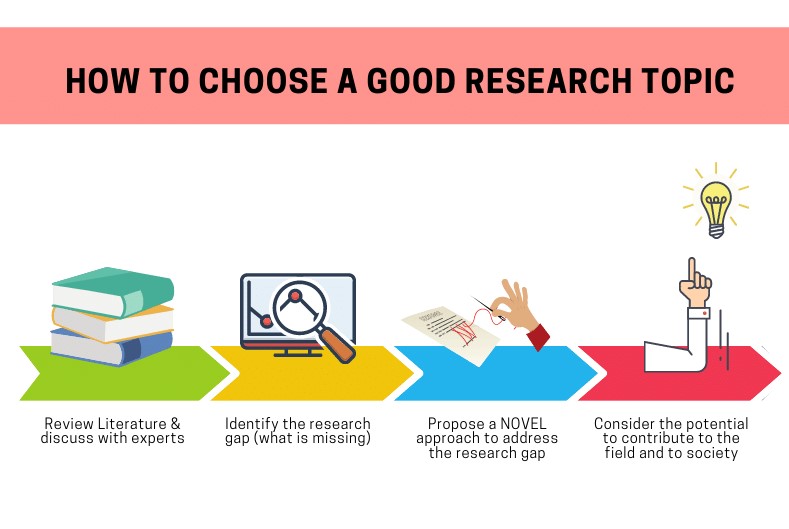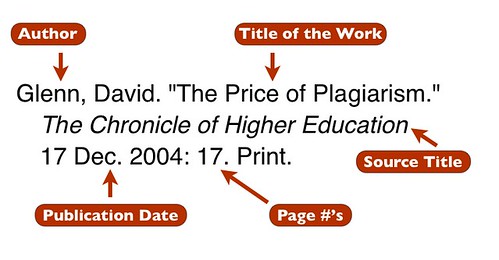New Order Found Please Review the order ASAP for the client to
proceed

Unread Message Found Please check the message ASAP and reply to client


I. Introduction
II. Understanding the Basics of Psychology Research Papers
III. Choosing a Research Topic in Psychology Research Papers
IV. Crafting a Strong Introduction for Psychology Research Papers
IV. Conducting Literature Review for Psychology Research Papers
VI. Developing the Methodology for Psychology Research Papers
VII. Analyzing and Presenting Results in Psychology Research Papers
VIII. Engaging Discussions in Psychology Research Papers
IX. Crafting a Cohesive Conclusion for Psychology Research Papers
X. Ensuring Proper Citations for Psychology Research Papers
XI. Refining the Abstract for Psychology Research Papers
XII. Editing and Proofreading
A. Importance of Research Papers in Psychology
Psychology research papers play a pivotal role in advancing our understanding of human behavior and mental processes. These papers are not merely academic exercises but serve as crucial contributions to the ever-expanding body of psychological knowledge. By delving into diverse topics ranging from cognitive processes to social dynamics, research papers in psychology provide valuable insights that guide therapeutic interventions, policy decisions, and further scientific inquiry.
They facilitate the dissemination of new ideas, methodologies, and findings, fostering a continuous cycle of discovery and refinement within the field. Moreover, the process of crafting these papers hones researchers' analytical and critical thinking skills, preparing them for the rigors of scientific inquiry. Ultimately, the importance of psychology research papers lies in their ability to bridge theoretical understanding with practical applications, contributing to the betterment of individual and societal well-being.
B. Overview of the Crafting Process
Crafting psychology research papers involves a meticulous process that extends beyond the mere compilation of information. The journey begins with a thorough understanding of the chosen topic, followed by a comprehensive literature review to contextualize the study within existing knowledge. Researchers must then strategically design and execute their methodology, carefully selecting participants, instruments, and data collection procedures.
The subsequent analysis and interpretation of results demand a keen eye for detail and a proficiency in statistical methods. The crafting process also entails weaving a compelling narrative through the introduction, discussion, and conclusion sections, ensuring that the research not only informs but captivates its audience. Additionally, adherence to ethical considerations, proper citation practices, and a commitment to rigorous editing contribute to the overall integrity of the research paper. In essence, the crafting process of a psychology research paper is a dynamic and multifaceted endeavor, demanding both scholarly rigor and effective communication skills.
A. Definition and Purpose of a Research Paper
In the realm of psychology, a research paper serves as a fundamental vehicle for academic exploration and knowledge dissemination. Psychology research papers are scholarly document that systematically presents original research or a critical analysis of existing studies within the field. It goes beyond summarizing information by contributing new insights, theories, or empirical findings.
The primary purpose is to advance our understanding of human behavior and mental processes. By adhering to a structured format that includes essential components such as an abstract, introduction, literature review, methodology, results, discussion, and conclusion, these papers provide a comprehensive and organized approach to presenting research. Through this process, researchers aim to contribute meaningfully to the discipline, fostering a collective progression of knowledge and contributing to the broader scientific conversation in psychology.
B. Key Components of Psychology Research Papers
Psychology research papers comprises several key components, each serving a distinct purpose in presenting a comprehensive study. The abstract provides a concise summary of the research, highlighting key findings and implications. The introduction sets the stage by introducing the topic, stating the research problem, and formulating a hypothesis. A literature review critically examines existing research, placing the study within a broader context.
The methodology section details the research design, participant selection, and data collection methods. Results present the findings, often utilizing statistical analysis and visual aids. The discussion interprets the results, relates them to the hypothesis, and explores broader implications. Finally, the conclusion summarizes key findings and suggests avenues for future research. Collectively, these components ensure a systematic and thorough exploration of the chosen topic, contributing to the advancement of psychological knowledge.

A. Identifying Personal Interests
Selecting a research topic for Psychology Research Papers is a critical step that begins with identifying personal interests. When researchers choose a subject they are passionate about, the enthusiasm often translates into a more engaged and dedicated exploration. Personal interests not only fuel motivation but also contribute to a deeper understanding of the chosen topic.
Identifying a topic that resonates personally allows researchers to bring unique perspectives to their work, fostering a genuine connection that can enhance the quality and authenticity of the research. This initial step in the process of crafting a psychology research paper is pivotal, as it sets the foundation for a meaningful and fulfilling research journey.
B. Addressing Current Trends in Psychology
In the dynamic field of psychology, selecting a topic for Psychology Research Papers involves staying attuned to current trends. Addressing contemporary issues and emerging themes ensures that the research remains relevant and contributes to the ongoing discourse in the discipline.
By aligning with current trends, researchers have the opportunity to explore areas of study that are not only intellectually stimulating but also hold practical implications for understanding human behavior and cognition. This approach allows for a dynamic connection between the research and the broader context of evolving psychological theories and applications, positioning the study to make meaningful contributions to the ever-changing landscape of psychological inquiry.
C. Evaluating Feasibility and Relevance
When selecting a research topic in psychology, it is crucial to balance enthusiasm with practical considerations. Evaluating the feasibility and relevance of a chosen topic ensures that the research can be conducted effectively and contributes meaningfully to the field. Researchers must assess the availability of resources, including time, funding, and access to participants or data.
Simultaneously, the relevance of the chosen topic to the broader discipline and its potential impact on existing knowledge should be carefully considered. A well-balanced approach to feasibility and relevance not only enhances the likelihood of successful research but also ensures that the findings make a valuable and applicable contribution to the ever-evolving landscape of psychological inquiry.

A. Hooking the Reader
Crafting compelling introductions for psychology research papers involves the art of hooking the reader from the outset. The opening sentences are akin to a literary handshake, setting the tone for engagement. This can be achieved through a thought-provoking statement, a relevant anecdote, or a compelling question that sparks curiosity.
By strategically capturing the reader's attention, researchers create a pathway for sustained interest in the study. Whether through the presentation of a puzzling phenomenon or the introduction of a contentious theory, the goal is to entice the reader to delve deeper into the research, emphasizing the significance and intrigue of the study from the very beginning. This initial connection established in the introduction lays the groundwork for a reader's continued interest and investment in the unfolding narrative of the research paper.
B. Stating the Research Problem
Crafting strong introduction for a psychology research papers involves skillfully stating the research problem. This pivotal aspect sets the tone for the entire study, as it communicates the specific issue the research seeks to address. The introduction should succinctly outline the research problem, providing context for its significance in the broader field of psychology.
Clearly articulating the problem helps readers understand the purpose and relevance of the study from the outset, fostering interest and engagement. A well-stated research problem serves as the intellectual anchor of the introduction, guiding the reader into the intricate web of the research paper and highlighting the importance of unraveling the proposed question or issue.
C. Formulating a Clear Hypothesis
Crafting a robust introduction for a psychology research paper involves the essential step of formulating a clear hypothesis. The hypothesis serves as the guiding framework, offering a concise statement predicting the expected outcome of the study. This not only provides a roadmap for the research but also engages the reader by presenting a specific expectation to be explored and validated or refuted.
A well-crafted hypothesis contributes to the coherence of the research, aligning the reader's focus with the central question and setting the stage for the subsequent methodology, results, and discussion sections. By formulating a clear hypothesis in the introduction, researchers invite readers to join them on a structured exploration, emphasizing the investigatory nature of the psychological study and the pursuit of meaningful insights.

A. Importance of Literature Review
Conducting a literature review is a critical phase in the preparation of psychology research papers, and its importance cannot be overstated. This comprehensive examination of existing scholarly works serves as the foundation for the research, offering a panoramic view of the current state of knowledge in the chosen area. The literature review enables researchers to identify gaps, conflicts, or trends in previous studies, providing a context for their own research. It establishes the theoretical framework, helping to refine research questions and hypotheses.
Moreover, a well-executed literature review showcases the researcher's familiarity with relevant scholarship, demonstrating the academic rigor and credibility of the upcoming study. By engaging with the existing body of literature, researchers contribute to the ongoing dialogue in their field, ensuring that their work builds upon and extends the collective understanding of psychological phenomena. In essence, the literature review is not just a formality; it is a crucial step in the research process that shapes the intellectual landscape in which the new study will be situated.
B. Effective Search Strategies
Effective search strategies are fundamental when conducting a literature review for psychology research papers. A successful review requires a systematic and strategic approach to gathering relevant scholarly works. Initiating the process involves using carefully selected keywords and phrases related to the research topic, ensuring a targeted exploration of databases, journals, and other academic resources.
Researchers should employ Boolean operators and other advanced search techniques to refine and broaden their searches appropriately. Utilizing reputable databases such as PubMed, PsycINFO, and Google Scholar enhances the likelihood of discovering pertinent literature.
Additionally, citation chaining—tracking references from identified articles—and exploring key authors in the field can further enrich the literature review. By employing these effective search strategies, researchers can ensure a thorough and comprehensive exploration of existing scholarship, laying a robust foundation for their psychology research paper.
C. Analyzing and Synthesizing Literature
Analyzing and synthesizing literature is a pivotal stage in conducting a literature review for psychology research papers. Beyond merely summarizing existing studies, this process involves a critical examination of the methodologies, findings, and theoretical frameworks of each selected work. Researchers must discern patterns, inconsistencies, and gaps in the literature to derive meaningful insights.
The synthesis aspect involves integrating diverse sources to construct a coherent narrative that adds value to the existing body of knowledge. By identifying common themes, conflicts, or trends across studies, researchers can develop a more nuanced understanding of their research topic. The synthesis of literature not only informs the theoretical foundation of the upcoming research but also sets the stage for constructing a research framework that builds upon and contributes to the broader scholarly conversation in the field of psychology.

A. Describing Research Design
In psychology research papers, describing the research design is a critical aspect of developing the methodology. This section outlines the blueprint for the entire study, detailing the overall plan for data collection and analysis. The research design encompasses various elements such as experimental, correlational, or observational approaches, each tailored to address the specific research questions.
Researchers must elucidate the rationale behind their chosen design, justifying its suitability for the study's objectives. Clarity in describing the research design not only ensures transparency but also enables readers to assess the study's validity and reliability. Whether employing a longitudinal study, cross-sectional analysis, or a controlled experiment, a well-articulated description of the research design sets the stage for the subsequent sections of the methodology and lays the foundation for the comprehensive exploration of the chosen psychological phenomenon.
B. Selecting Participants
The process of developing the methodology for psychology research papers involves a crucial step: selecting participants. This decision is pivotal as the chosen individuals contribute to the study's generalizability and the validity of its findings. Researchers must carefully define the target population, specifying inclusion and exclusion criteria. Whether employing random sampling, stratified sampling, or convenience sampling, the rationale for the chosen method must be transparent.
Ethical considerations, such as informed consent and confidentiality, are paramount when involving human participants. Clear documentation of the participant selection process not only ensures the study's ethical integrity but also allows for the reproducibility of the research. By thoughtfully navigating the intricacies of participant selection, researchers lay the groundwork for a methodology that not only addresses research questions effectively but also upholds ethical standards in the field of psychology.
C. Choosing Instruments and Measures
In the development of methodology for psychology research papers, a critical aspect is the thoughtful selection of instruments and measures. This step involves identifying the tools and methods used to collect data, ensuring their appropriateness for the research objectives. Whether employing surveys, interviews, neuropsychological tests, or other measurement tools, researchers must justify their choices based on the nature of the study and the characteristics of the participants.
The reliability and validity of chosen instruments are paramount, and researchers must provide a clear rationale for their confidence in the chosen measures. This meticulous selection process not only enhances the accuracy of data collection but also strengthens the overall robustness of the research methodology. By articulating the reasoning behind their choices, researchers establish transparency and credibility in the methodological framework of their psychology research paper.
D. Data Collection Procedures
In the development of the methodology for psychology research papers, delineating the data collection procedures is a pivotal step. This involves outlining the systematic approach to gathering information and observations that will inform the study's findings. Researchers must provide a detailed account of how data will be collected, whether through experiments, surveys, interviews, observations, or a combination of methods.
Clarity in describing the procedures ensures the study's replicability and allows other researchers to assess the reliability of the findings. Ethical considerations, such as obtaining informed consent and protecting participant confidentiality, should be prominently addressed. A well-defined data collection plan not only enhances the internal validity of the research but also contributes to the overall rigor and credibility of the methodology in psychology research papers.

A. Utilizing Statistical Analysis
Analyzing and presenting results in psychology research papers involves a crucial phase: utilizing statistical analysis. This step is instrumental in extracting meaningful patterns and drawing valid conclusions from collected data. Statistical techniques such as t-tests, ANOVA, regression, and correlation help researchers discern relationships, trends, or differences within their data. The choice of statistical methods should align with the research questions and the nature of the collected data.
A transparent explanation of the statistical analysis not only enhances the credibility of the study but also allows readers to assess the robustness of the findings. By employing appropriate statistical tools, researchers navigate the complexities of data interpretation, providing a solid foundation for the discussion and implications of their research in the broader context of psychology.
B. Creating Graphs and Tables
Effectively analyzing and presenting results in psychology research papers extends beyond statistical analysis to the creation of clear and informative graphs and tables. Visual representations play a pivotal role in conveying complex data patterns and relationships to readers in an accessible manner. Whether depicting trends over time, comparing groups, or illustrating correlations, well-designed graphs and tables enhance the understanding of research findings.
Researchers must choose appropriate formats, ensuring clarity without sacrificing accuracy. Captions and labels should be concise yet informative, guiding readers through the visual representations. In the realm of psychology, where conveying nuanced information is key, skillful creation of graphs and tables contributes significantly to the overall impact and accessibility of the study's results.
C. Interpreting Findings
Interpreting findings is a critical aspect of analyzing and presenting results in psychology research papers. Beyond statistical significance, researchers must delve into the meaning and implications of their results. This involves providing context, explaining the practical significance of observed effects, and discussing the relevance of findings in relation to the research questions or hypotheses.
The interpretation phase allows researchers to connect their results to existing literature, theories, or real-world applications. Additionally, acknowledging limitations and potential alternative explanations demonstrates intellectual honesty. A well-articulated interpretation not only demonstrates the researcher's understanding of the data but also enriches the discussion section, guiding readers to a more comprehensive understanding of the study's contributions and implications within the broader field of psychology.

A. Relating Results to Hypothesis
Engaging discussions in psychology research papers involve skillfully relating results to the initially proposed hypothesis. This phase is crucial for providing coherence to the study, allowing researchers to demonstrate how their findings align with or deviate from the anticipated outcomes. By drawing connections between the results and the hypothesis, researchers offer insights into the validity of their initial predictions and the potential implications for existing theories.
This process also invites readers to critically assess the study's internal consistency and contributes to the overall transparency of the research. A well-crafted discussion that effectively relates results to the hypothesis not only reinforces the study's scientific rigor but also guides readers towards a deeper understanding of the study's significance within the broader context of psychological research.
B. Addressing Limitations
In psychology research papers, engaging discussions necessitate a transparent exploration of the study's limitations. Addressing limitations is a crucial step toward intellectual honesty, acknowledging potential constraints in the research design, methodology, or data analysis. This process allows researchers to contextualize their findings appropriately, demonstrating a nuanced understanding of the study's scope.
By openly discussing limitations, researchers not only highlight areas for future improvement but also underscore the complexity of psychological phenomena. Moreover, this practice encourages readers to approach the study with a discerning perspective, fostering a deeper appreciation for the nuances and challenges inherent in the research process. A thorough discussion of limitations contributes to the overall integrity of the research and guides the interpretation of results in a more informed manner.
C. Implications for Future Research
Engaging discussions in psychology research papers extend beyond current findings to explore implications for future research. This forward-looking aspect is essential for identifying avenues that warrant further exploration and refinement. Researchers can discuss how their study contributes to the broader field, suggesting new questions, potential applications, or areas of investigation.
By speculating on the implications of their work, researchers stimulate curiosity and provide a roadmap for subsequent studies to build upon their findings. This proactive approach not only underscores the dynamic nature of psychological inquiry but also encourages a continuous cycle of discovery and improvement within the field. In addressing the implications for future research, psychologists contribute to the evolution and advancement of knowledge in their area of study.

A. Summarizing Key Findings
Crafting a cohesive conclusion for psychology research papers involves skillfully summarizing key findings. In this pivotal section, researchers distill the essence of their study, concisely presenting the most significant outcomes. A well-crafted summary encapsulates the main discoveries, reinforcing the central contributions of the research.
By revisiting key findings, researchers guide readers to reflect on the core insights gained from the study. This section serves as the culmination of the research journey, providing closure to the reader and emphasizing the importance of the study within the broader context of psychological inquiry. A cohesive conclusion that effectively summarizes key findings ensures that the research leaves a lasting impression, leaving readers with a clear understanding of the study's impact and implications.
B. Revisiting Research Questions
Crafting a cohesive conclusion for psychology research papers involves revisiting the initial research questions, thereby creating a sense of closure and completeness. By returning to the core inquiries posed at the beginning of the study, researchers reaffirm the purpose and objectives of their investigation. This step allows for a reflective examination of how well the study addressed the posed questions and whether the hypotheses were supported or refuted.
By revisiting the research questions, researchers guide readers through a retrospective journey, encouraging a thoughtful consideration of the study's outcomes in relation to the original inquiries. This not only reinforces the study's coherence but also highlights the evolution of understanding within the context of the research. In crafting a conclusion that revisits research questions, psychologists underscore the significance of their work and pave the way for continued exploration in the field.
C. Offering Practical Recommendations
Crafting a cohesive conclusion for psychology research papers involves going beyond summarizing findings to offer practical recommendations. This forward-looking element serves to bridge the gap between theory and real-world application. Researchers can suggest practical implications of their study, providing actionable insights for professionals, policymakers, or practitioners in the field of psychology.
Whether proposing new interventions, highlighting areas for further investigation, or offering guidance for practical applications, these recommendations contribute to the study's broader impact. By offering practical suggestions, researchers extend the relevance of their work beyond the academic realm, demonstrating the practical utility of their findings and encouraging the integration of research into practical settings. A well-crafted conclusion that includes practical recommendations enhances the overall significance and applicability of the psychology research paper.

A. Citing Sources in-text and in the References Section
Ensuring proper citations is a fundamental aspect of maintaining academic integrity in psychology research papers. Citing sources both in-text and in the references section is crucial for giving credit to the original authors and allowing readers to trace the origins of the information presented. In-text citations typically include the author's name and the publication year, enabling readers to locate the complete source in the references section.
The references section, formatted according to the chosen citation style (such as APA), provides a comprehensive list of all sources cited in the paper. Accurate and consistent citation practices not only prevent plagiarism but also contribute to the transparency and credibility of the research. Researchers must be meticulous in adhering to the specific citation guidelines of the chosen style, ensuring that their work meets the highest standards of scholarly rigor.
B. Avoiding Plagiarism
Ensuring proper citations is paramount in academic writing, particularly in psychology research papers, to avoid plagiarism. Plagiarism involves presenting someone else's ideas, words, or work as your own without proper attribution. To prevent plagiarism, researchers must meticulously cite all sources, including direct quotes, paraphrased information, and even ideas that are not common knowledge.
This not only upholds ethical standards but also demonstrates intellectual honesty and respect for the original contributors to the field. Proper citation practices involve using a consistent citation style, such as APA or MLA, and providing detailed references in the bibliography or works cited section. By diligently avoiding plagiarism through accurate and transparent citation, researchers uphold the integrity of their work and contribute to the credibility of the broader academic community.

A. Condensing Key Information
Refining the abstract for psychology research papers involves the art of condensing key information into a succinct and impactful summary. The abstract serves as a concise preview of the entire study, offering a snapshot of the research question, methodology, results, and conclusions. In this process of refinement, researchers must distill the most crucial aspects of their work, presenting a clear and compelling overview that entices readers to delve into the full paper.
By condensing key information effectively, the abstract becomes a powerful tool to communicate the essence of the research, enabling readers to quickly grasp the significance of the study and decide on its relevance to their interests. A well-refined abstract not only enhances the paper's accessibility but also sets the stage for a more engaging and informed exploration of the complete research work.
B. Highlighting Major Findings
Refining the abstract for psychology research papers involves the strategic emphasis on highlighting major findings. In this concise summary, researchers aim to encapsulate the core outcomes of their study, offering readers a clear insight into the key discoveries. By prioritizing the most significant results, the abstract becomes a valuable snapshot that enables readers to quickly comprehend the essence and impact of the research.
This refining process requires careful consideration of the study's main contributions and their relevance to the broader field of psychology. Ultimately, an abstract that effectively highlights major findings serves as a compelling gateway, drawing readers into the research paper with a succinct yet comprehensive overview of the study's pivotal outcomes.
C. Capturing Reader Interest
Refining the abstract for psychology research papers involves a deliberate effort to capture reader interest. This concise yet engaging summary serves as the initial point of contact for potential readers, and its refinement is crucial for enticing them to explore the full paper. Researchers must skillfully craft the abstract to spark curiosity, employing clear and compelling language to convey the significance of the study.
By succinctly introducing the research question, methodology, and major findings, the refined abstract not only informs but also intrigues readers, motivating them to delve deeper into the research. This strategic approach ensures that the abstract serves as an effective invitation, setting the stage for an engaging and enlightening exploration of the psychology research paper.

A. Seeking Feedback from Peers
In the process of editing and proofreading psychology research papers, seeking feedback from peers is a valuable strategy to enhance the overall quality of the writing. Peer feedback offers a fresh perspective and constructive insights that the author may overlook. Peers can identify unclear passages, suggest improvements in the flow of ideas, and provide valuable input on the overall coherence of the paper.
Engaging in this collaborative editing process not only helps eliminate errors and enhance clarity but also strengthens the credibility and persuasiveness of the research. Peer feedback acts as a safeguard against potential oversights, ensuring that the final version of the paper is polished, well-articulated, and ready for submission to academic journals or conferences.
B. Utilizing Editing Tools
In the meticulous process of editing and proofreading psychology research papers, utilizing editing tools is a practical and efficient approach. Spell-checkers, grammar-checking software, and style guides can help identify and rectify common language errors, ensuring the manuscript meets the highest standards of clarity and correctness.
Additionally, advanced editing tools with features like syntax analysis and plagiarism detection can enhance the overall quality of the paper. While these tools are valuable aids, it's essential for researchers to exercise judgment and not solely rely on automated suggestions. Combining the efficiency of editing tools with careful manual review enables researchers to produce a polished and error-free manuscript, ready for submission and publication in the field of psychology.

Hard Binding Dissertation ( 4 Key Features)
1 year(s) ago
Psychology dissertation topics (5 Major Areas)
1 year(s) ago
Dissertation editor (5 Key Services)
1 year(s) ago
Dissertation Coaching (7 Main Benefits)
1 year(s) ago
Dissertation Acknowledgement Format ( 6 Key Tips)
1 year(s) ago
Psychology Dissertation Topics ( 7 Main Ideas)
1 year(s) ago
Dissertation Binding ( Key Tips)
1 year(s) ago
Dissertation editing services (8 Key Areas)
1 year(s) ago
Dissertation template (Student's Guide)
1 year(s) ago
How to come up with a dissertation topic (9 Key Steps)
1 year(s) ago
Radio Active Tutors is a freelance academic writing assistance company. We provide our assistance to the numerous clients looking for a professional writing service.
Need academic writing assistance ?
Order Now
